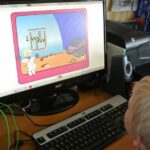Welcome to the world of Python programming! Whether you’re taking your very first steps into coding or you’re an experienced developer looking to expand your skills, Python offers an accessible and powerful platform. It’s known for its clear syntax and versatility, making it a fantastic choice for anyone interested in Learning Python Programming. If you’re completely new to programming, you’ll find Python remarkably beginner-friendly. And if you’re coming from another language, you’ll appreciate how quickly you can pick up Python’s nuances and start building. So, let’s dive in and explore how to begin your learning journey with Python programming.
Getting Started with Python: Installation is Key
The first step in learning python programming is setting up your environment. Fortunately, installing Python is generally a straightforward process. Many operating systems, such as Linux and macOS, often come with Python pre-installed. Even some Windows computers, particularly those from certain manufacturers, might already have Python ready to go.
To check if Python is already installed on your system, you can open your command line (Terminal on macOS/Linux, Command Prompt on Windows) and type python --version or python3 --version. If Python is installed, this command will display the version number.
If you find that Python isn’t installed, or if you need a specific version, you can easily download it from the official Python website. For detailed instructions tailored to your operating system, the BeginnersGuide/Download page on the Python wiki offers helpful notes to guide you through the installation process. Generally, the installation is quite simple on most platforms, with installers that handle most of the configuration for you.
Essential Resources for Learning Python Programming
Once you have Python installed, the real fun begins – learning python programming! A wealth of resources is available to support you at every stage of your learning journey.
Tools to Enhance Your Python Coding Experience
To make coding in Python more efficient and enjoyable, consider using Integrated Development Environments (IDEs) or specialized text editors. IDEs like PyCharm, VS Code with Python extensions, and Thonny provide features such as code completion, debugging tools, and integrated terminals. For lighter-weight options, text editors like Sublime Text or Atom, with Python-specific plugins, can also be excellent choices. You can explore a comprehensive list of options on the IDEs and text editors pages in the Python wiki to find what best suits your style and needs.
Foundational Knowledge through Books and Examples
For those who prefer structured learning, introductory books are invaluable. Numerous books cater to different learning styles and levels of experience. The introductory books list on the Python wiki provides recommendations for various books that can guide you through the fundamentals of Python. Complementing book learning with practical examples is crucial. The code samples available offer practical illustrations of Python concepts and can help solidify your understanding.
Tutorials and Official Documentation: Deep Dive into Python
For experienced programmers or those who prefer a more hands-on approach, tutorials are a great way to quickly grasp Python’s syntax and core concepts. The BeginnersGuide/Tutorials page curates a list of tutorials specifically designed for programmers already familiar with coding in other languages.
For definitive and in-depth information, the online documentation is your primary resource. Start with the official tutorial, which offers a concise introduction to the language, perfect for getting started. As you progress, the library reference provides exhaustive details on Python’s extensive standard library, and the language reference offers a complete, though more technical, explanation of Python’s syntax and structure. To see practical applications and common solutions, the ActiveState Python Cookbook is a fantastic resource for Python recipes and patterns.
Finding Specific Python Applications and Libraries
As you delve deeper into learning python programming, you might need specific libraries or tools for particular tasks. The Python ecosystem is vast, and finding what you need is usually straightforward. The Python Package Index, often called the “Cheese Shop,” is the central repository for third-party Python packages. It’s an excellent place to discover libraries for almost any purpose imaginable.
If you’re unsure where to start, the search page on the Python website can help you explore various Python-related resources. And of course, using a general search engine like Google with relevant keywords along with “python” is often highly effective in finding libraries, applications, and solutions. If you’re still stuck, reaching out to the Python community is a great option. Asking your question on the python newsgroup is likely to connect you with experienced Python users who can offer guidance.
Common Questions and Further Exploration
It’s natural to have questions as you’re learning python programming. The official FAQ is a valuable resource that addresses many of the frequently asked questions about Python, covering a wide range of topics from basic concepts to more advanced features.
If you become passionate about Python and wish to contribute to its development, the developer area provides information on how you can get involved. Contributing to Python isn’t limited to expert programmers; your help with documentation, testing, and community support is equally valuable.
Learning python programming is a rewarding journey. With its ease of use and extensive resources, Python empowers you to bring your ideas to life, whether you’re building web applications, analyzing data, automating tasks, or exploring other exciting domains. Start exploring, engage with the community, and enjoy the process of becoming a Python programmer!
